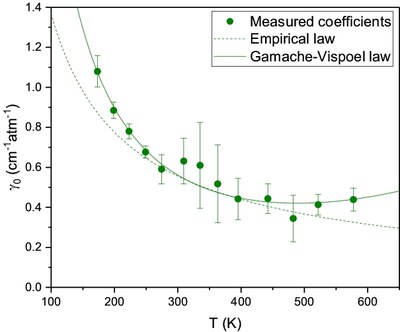Thesis Defence by Sylvain Leonis
- https://ilee.unamur.be/events/thesis-defence-by-sylvain-leonis
- Thesis Defence by Sylvain Leonis
- 2019-12-11T15:00:00+01:00
- 2019-12-11T18:00:00+01:00
- When Dec 11, 2019 from 03:00 PM to 06:00 PM (Europe/Brussels / UTC100)
- Where Auditoire CH11 - Bâtiment Physique-Chimie - Sentier Thomas
-
Add event to calendar
 iCal
iCal
Diode-laser spectroscopy study of the collisional broadening of chloromethane lines: from low to high temperatures
 The climate change problematic has become a front-page news over the recent years. In this respect, it is mandatory to understand and quantify the pollutants’ evolution in our atmosphere, such as the chloromethane, which is one of the main ozone depleting substances. For a better understanding of our atmosphere, we need accurate spectroscopic parameters, in particular, the collisional broadening coefficients.
The climate change problematic has become a front-page news over the recent years. In this respect, it is mandatory to understand and quantify the pollutants’ evolution in our atmosphere, such as the chloromethane, which is one of the main ozone depleting substances. For a better understanding of our atmosphere, we need accurate spectroscopic parameters, in particular, the collisional broadening coefficients.
In order to measure chloromethane collisionnal broadening coefficients at high temperature, we developed and realized a multipass absorption cell. This cell enables the study of line profiles and the determination of line shape parameters from room temperature up to more than 700°C. Its long, and adaptable, optical pathlength makes this cell a versatile tool.
The measurements have been realized by high-resolution spectroscopy, based on diode-lasers and quantum cascade lasers, and equipped with various absorption cells. The coefficients of collisional broadening of lines, for chloromethane pure or diluted in nitrogen or in carbon dioxide, have been measured at various temperatures comprised between -100 and 360°C. With these measurements, we have precisely studied the temperature dependence of collisional broadening coefficients.
 Our results show the good agreement of a newly proposed temperature dependence law with the experimental measurements (see figure). In addition to the instrumental development, the main original features of this thesis are the fact that such measurements are carried out at high temperature and the dilution of the studied gas in carbon dioxide.
Our results show the good agreement of a newly proposed temperature dependence law with the experimental measurements (see figure). In addition to the instrumental development, the main original features of this thesis are the fact that such measurements are carried out at high temperature and the dilution of the studied gas in carbon dioxide.
All the results are important for the remote sensing of atmospheres (Earth, Mars, ...), the study of combustion residual gases and a better understanding of collisional processes in the gas phase.
 Institute of Life, Earth and Environment
Institute of Life, Earth and Environment
